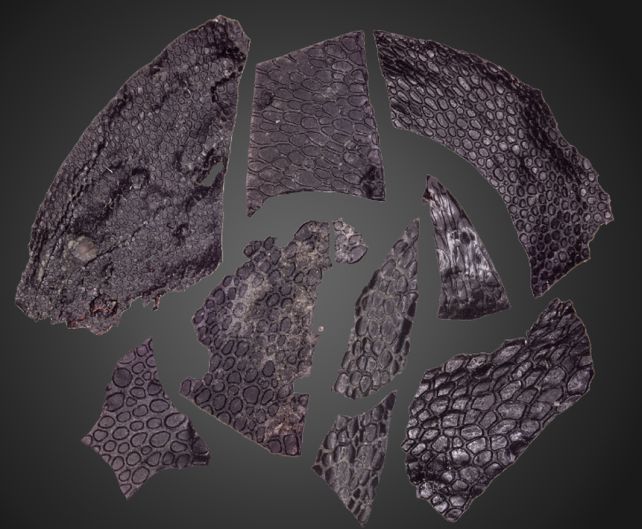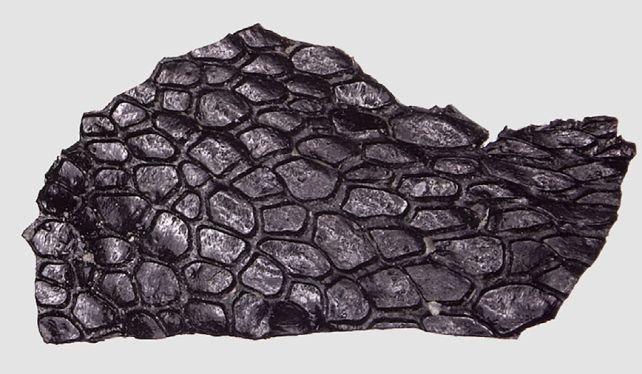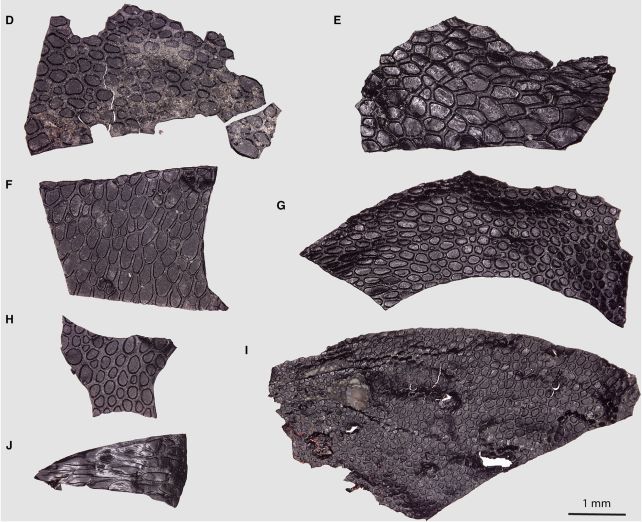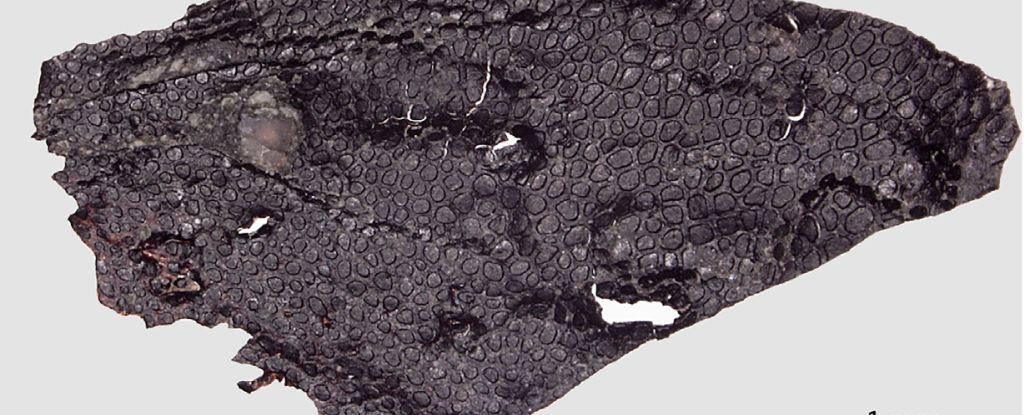Products You May Like
It’s just a tiny thing, smaller than a fingernail. But a rock found deep in a limestone cave in Oklahoma is extending our understanding of prehistoric skin.
The texture preserved thereon, paleontologists have found, is the earliest known example of fossilized skin from a diverse classification of animals known as amniotes.
Dating back 290 million years ago – a full 21 million years earlier than the previous record-holder – its wearer appears to have been a reptile, with a pebbly surface similar to the skins of crocodilians today.
Given how important skin is, acting as a protective barrier that keeps outside contaminants out and our blood and guts in, the discovery is an important one for piecing together its evolutionary history, scientists say.
“Every now and then we get an exceptional opportunity to glimpse back into deep time,” says paleontologist Ethan Mooney of the University of Toronto, who led the research. “These types of discoveries can really enrich our understanding and perception of these pioneering animals.”

The fossil record may be rich and varied, but there are some parts of the body that are preserved much more rarely than others. This is any soft tissue, really – things like skin, organs, and connective material break down much more readily than bone, and is often gone before stone has a chance to preserve its structure.
Some environments, however, are just right for the preservation of soft tissue. The infilled cave system of Richards Spur in Oklahoma is one such environment. The sediment is unusually soft and fine, and the lack of oxygen would delay the decomposition of soft tissue. In addition, during the Permian, the cave was an active oil seep; the hydrocarbons in the petroleum and tar permeating the sediment would have also helped preserve tissues.
The site is known for its rich and diverse assembly of early tetrapods. Some of the earliest known amniotes – the group of terrestrial vertebrates that includes reptiles, mammals, and birds – have been found in the Richards Spur caves.
The newly discovered skin fossil, however, is something really special. The skin has been carbonized in 3D, the first record we have of this from the Paleozoic. It’s also the earliest known preserved skin fossil that includes, not just the outer layer, but what are almost certainly structures associated with the deeper dermis layer.

“We were totally shocked by what we saw because it’s completely unlike anything we would have expected,” says Mooney.
“Finding such an old skin fossil is an exceptional opportunity to peer into the past and see what the skin of some of these earliest animals may have looked like.”
Unfortunately, we don’t know more about the animal to whom the skin once belonged; no associated skeleton was found. However, the non-overlapping pebbled surface resembles the skin of modern crocodilians, and the hinged regions between the scales resemble the skins of animals such as snakes and worm lizards.
The discovery, the researchers say, shows that, even very early on, when amniotes first started to diverge, skin was present and important.
“In particular,” they write in their paper, “the presence of an epidermis with hinges and scale-like protuberances underscores the importance of this component of the amniote skin as a barrier against the harsh terrestrial environment.”

The skin also offers us a new tool for interpreting the subsequent development and emergence of mammalian hair follicles and avian feathers. The first mammals appear on the fossil record about 225 million years ago, and birds around 150 million years ago. So this mystery animal could be a clue about the development of our own soft fleshy skins.
There’s a lot we still don’t know about how the various traits of different animal groups diverged and developed. Finding early examples of this trait is a rare and special window into the history of all this planet’s strange and wonderful forms of life.
The team’s research has been published in Current Biology.
